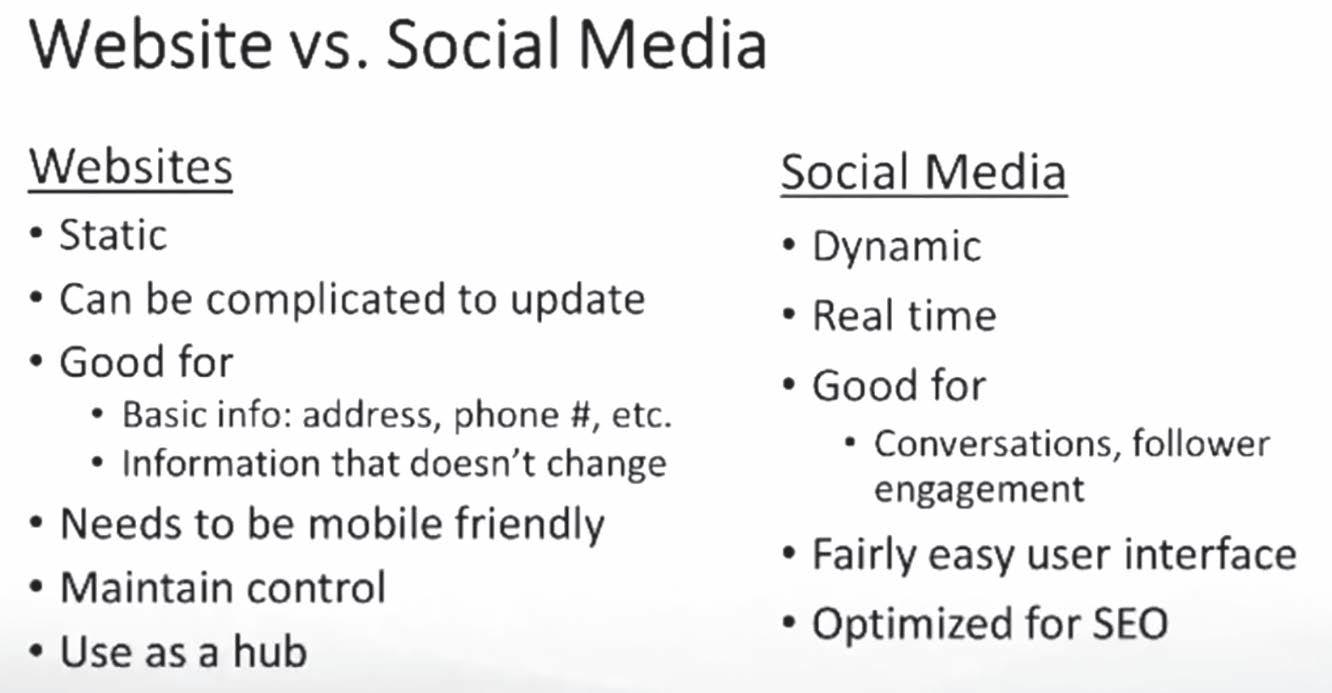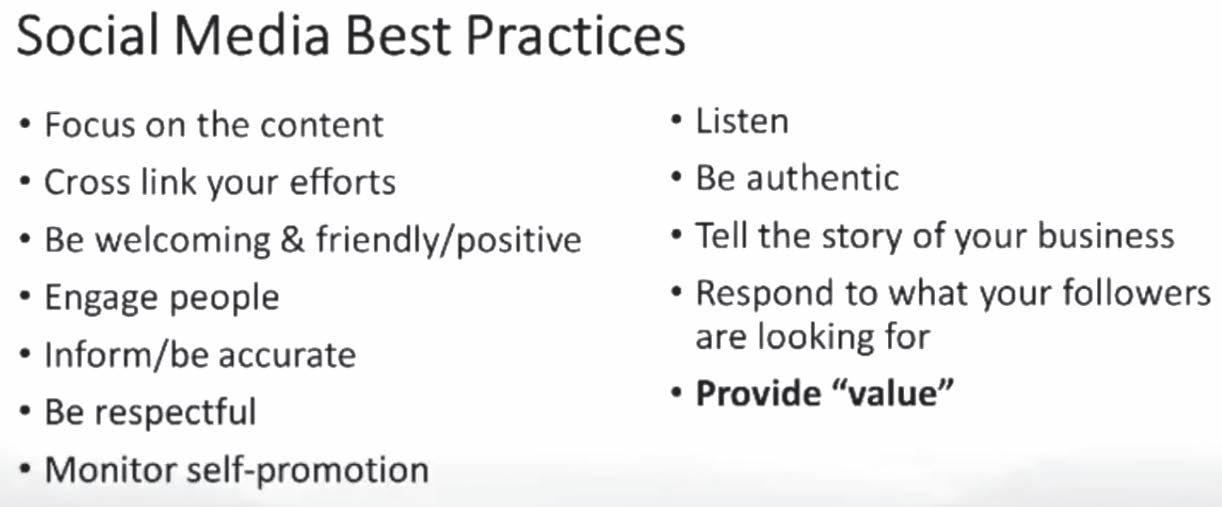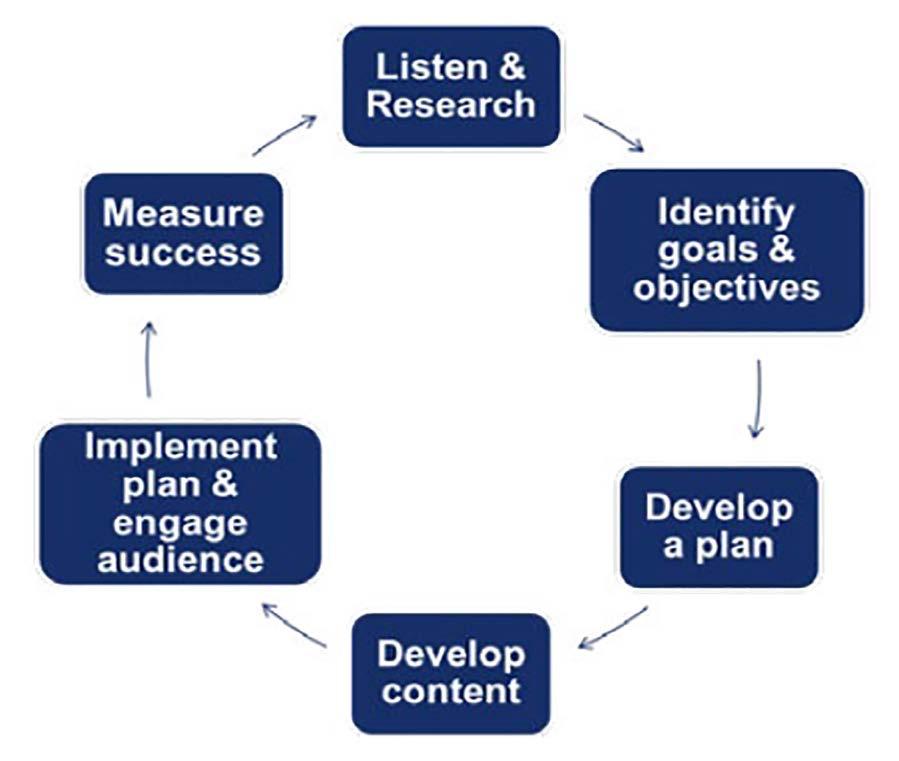
8 minute read
AQUACULTURE ECONOMICS, MANAGEMENT, AND MARKETING
Social Media: an introduction for successful use
By: Sarah Cornelisse*
However while it may seem obvious that social media is intended to provide a platform for engagement and communication between you and your audience, there are different expectations that come with the different sites. This article covers a basic introduction to the topic in order to encourage the interest of aquaculture business entrepreneurs into the digital marketing tools available in the web.
Introduction Consumers are evolving, and our marketing efforts must evolve to meet their needs and preferences. We’ve moved, for the most part, from what can be considered a traditional marketing environment where the business controls the messages that consumers receive and one-way communication dominates, such as through printed materials or radio ads, to a more progressive marketing environment where two-way messaging and communication take place on multiple levels and across multiple platforms and media modes, such as through social media platforms.
Consumers can connect with a business in any number of ways, using the method that best suits them at the time and circumstance and their individual preference. Small acts by a business and interactions between a business and consumers are now more important than the mass-marketing message crafted by a business in the past. Interactions can be shared and go viral in the social media landscape, thus holding businesses to a higher level of transparency.
Let’s take a minute to consider the long and winding road that many consumers take when making a purchase decision for products new to them. Consumers interested in a product may begin with an online search for the product to learn more about it, the business that produces and sells it and what other consumers are saying about the product and/or the business. This online search activity may or may not include social media sites as sources of information.
The consumer may then move on to asking members of their social networks for opinions and experiences with the product of interest or the business. They may also actively seek out content that the business is sharing on social media platforms to learn more about the product(s) and/ or business.
Figure 1
Comparative analysis of general features of a website vs. a social media platform. Source: Sarah Cornelisse. Webinar “Social media: an introduction for successful use”, (2018).

How to Choose Which Social Media Sites to Use Social media use has become widespread across the U.S. A January 2018 Pew Research Center survey showed that 69% of U.S. adults use at least one social media site, with the median American using three.
With the number of social media sites that exist, as a business owner or organizational leader you may have the question “What social media site(s) should I use?” The answer will be different for each business, depending on several factors.
What are your goals? Any time you implement the use of a tool, you should have an identified goal that the tool’s use will help you in reaching. The same goes for social media tools. It is easy to post large quantities of content to one or more sites without accomplishing anything. So, make sure you have determined your goals. You may find the need to use more than one social media tool to accomplish your goal(s). Consider the following goals to get you started: • Improving customer service • Increasing brand/farm/organizational awareness • Learning about your audience/customers
Whatever goals you set for your social media use, ensure that you’ve decided how you’ve going to measure achievement and that they help drive you toward achieving your overall business/organizational goals.
Who do you want to connect with and where are they? Are you looking to connect with your individual customers, local community members/residents, businesses, colleagues, women, techies? Different tools attract different types of users. For instance, 41% of women surveyed by Pew indicated using Pinterest compared to 16% of men. What are the demographics and interests of your audience? Developing a written profile of your audience, or several for different audience segments, can be helpful and may be something you have on hand if you’ve developed a marketing plan.
Once you’ve identified who your desired audience is, you can look at the social media sites they are currently using as well as researching the demographics of the users for the different social media tools you’re considering. For example, while Facebook has high use by most age groups, other social media sites show wider variability in use across age groups. Depending upon your specific goals and target audience(s), you could survey them, asking which sites they use and on which they would prefer to interact and connect with you.
Where are your competitors? What platforms are your direct competitors most active on? What sort of activity and engagement are they

Figure 2
Social Media best practices to achieve a successful digital marketing strategy. Source: Sarah Cornelisse. Webinar “Social media: an introduction for successful use”, (2018).

generating? While you shouldn’t base your decision on what social media to use solely on that used by your competition, knowing the current social media environment can assist you in determining a strategy for your use of social media. Perhaps, for example, you determine through research that your desired audience is migrating to a social media site, not currently embraced by your competitors. By identifying that, you have an opportunity to develop a competitive advantage by being the first to connect on this different site, in addition to having a presence on the site currently used by the competition.
What type of content do you want to share? Different social media platforms lend themselves better to different types of content. Instagram is image-centric and isn’t an ideal choice for lengthy posts or article length text. Facebook handles a variety of content types, but photos and video are now the most likely to be shown in the newsfeed of followers due to Facebook’s current algorithm. Video can now be supported on several social media sites, with Facebook Live, Periscope (owned by Twitter) and YouTube as examples.
How do you want to engage? While it may seem obvious that social media is intended to provide a platform for engagement and communication between you and your audience, there are different expectations that come with the different sites. For instance, Twitter is much more of a “real-time” conversation than Pinterest. Facebook tracks the responsiveness of pages to private messages (not comments on page posts) sent to the page and will display that on your page. In general, it’s more acceptable to tweet numerous times every day than it is to do so on Facebook. However, regular and consistent posting is key on all sites. Make sure that you’ve considered the aspect of timeliness - what your audience wants as well as

Figure 3
Social Media Strategy Development Process. Source: Sarah Conrelisse. “A Guide to Developing a Social Media Strategy for Ag Entrepreneurs”, PennState Extension (2020).

what you can deliver - when choosing which sites to use.
Answering these questions should lead you to identify the most appropriate social media platform(s) for your business or organization. On a regular basis you’ll want to measure whether, and how well, you’re achieving your goals for social media use. Don’t be afraid to drop the use of a social media site if it’s just not working for you.
Social Media Strategy Briefly Explained A social media strategy is a plan for what you want to accomplish by using social media as a marketing tool for your business. Within the larger context of a business plan, your social media strategy will typically be a component of your marketing plan. Developing and implementing a comprehensive social media strategy is important.
Strategy Development Process In Figure 3, you can find an illustration of the social media strategy development process. The process involves six steps, or stages. Notice that the process is similar to that for business plan development. Illustrated here as a cycle, it begins with listening and progresses through each of the other stages. The cycle is continuous. As consumers and markets are dynamic, so must be your social media strategy.
The key questions to answer during strategy development are: • Who is your target audience? • What are your primary objectives? • Where does the overall strategy fit into the business? • How will you differentiate yourself from the competition? • When and how will you evaluate your strategy?
As a business, you want your online presence, content, and messaging to be accessible to consumers at all times and aligned across all platforms. That is to say that the branding strategy you have for your business should be consistent across all marketing tools. The image and perception of your business should be the same whether the consumer visits your website or is interacting on Twitter, Facebook, or your blog. Developing and implementing a social media strategy, rather than randomly publishing content, will help you more effectively meet your business goals, reduce your risk of losing consumer trust and damaging your brand, and ultimately save time and money.
* This article is based on the webinar titled “Social media: an introduction for successful use” presented by Sarah Cornelisse and hosted by the National Aquaculture Association and the North Central Regional Aquaculture Centre on July, 2018. As well as a couple of online articles on the topic by the same author, Sarah Cornelisee who is Senior Extension Associate on
Agricultural Entrepeneurship and Business Management on PennState Extension of the Pennsylvania State University. References available under previous request to our editorial staff. Full webinar is available on demand through the US Aquaculture Society YouTube Channel at: https://www.youtube.com/watch?v=f1qHiZoX6_s&fe ature=youtu.be





